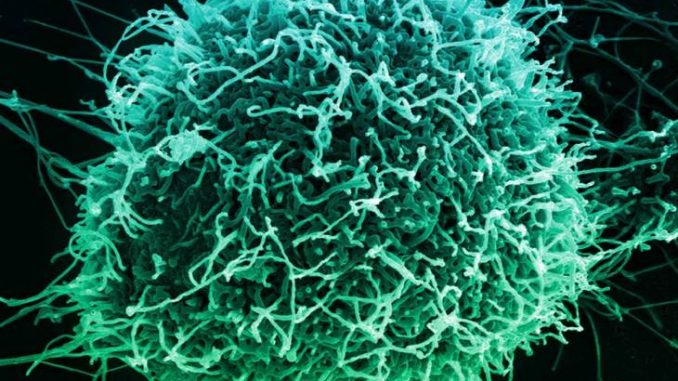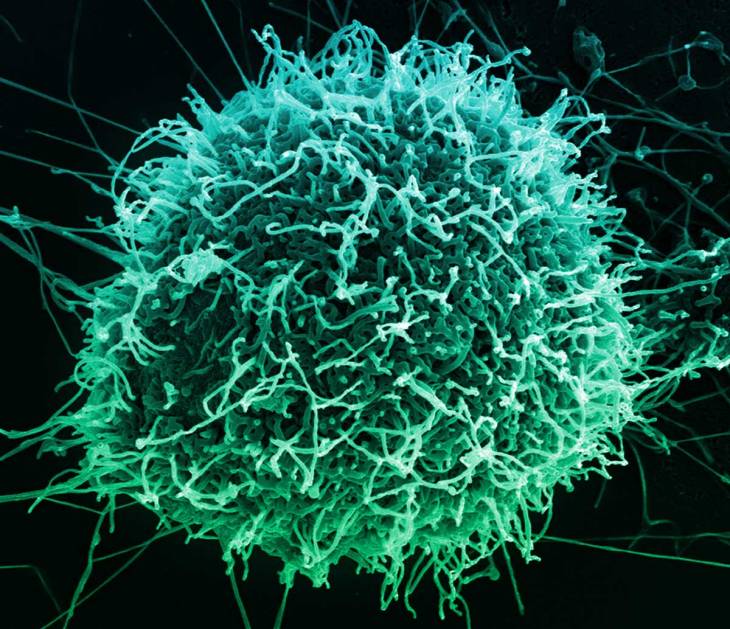

On Wednesday the World Health Organization declared the ongoing – and now year-old – Ebola outbreak a global health emergency.
The emergency declaration comes after a man became sick and brought the virus to the Congolese city of Goma, a highly populated transit hub with an international airport and next door to Rwanda. As it stands today, the current Ebola outbreak has surpassed 2,500 cases and 1,500 deaths concentrated largely in two provinces in eastern Congo.
The response effort has been hampered by a deadly mix of armed conflict, distrust, and lack of medical resources. Less than half of the affected population trusts the government and Ebola responders; armed groups have even killed responders. Public health experts expect the outbreak to continue into the foreseeable future.
Yet outside the public health community there has been relatively little concern in America about the second largest Ebola outbreak in history. By one crude metric, the President’s tweets, the current outbreak hasn’t even registered. During the 2014-2016 Ebola epidemic, which also generated an emergency declaration, Mr. Trump tweeted nearly a hundred times about Ebola. This outbreak? 0. Unfortunately this lack of public attention has translated into a shortfall in funding particularly in contrast to the 2014-2016 Ebola epidemic.
Going viral?
The contrast in concern between the 2014-2016 Ebola epidemic and current Ebola outbreak can largely be explained by proximity and fear. Interest in the 2014-2016 Ebola epidemic rose when two U.S. nurses contracted the virus from an imported case in Dallas. However, there was considerable public interest in the outbreak even before the infections in Dallas.
This suggests there is an innate fear associated with the Ebola virus itself. Fear from infectious diseases can be quantified by the deadliness of the pathogen, the severity of the symptoms, how much is known about it, how it’s transmitted, and whether treatment or preventive measures are available. Due to the severity of Ebola virus disease, you would expect any abnormally large Ebola outbreak to create a large amount of news coverage.
When determining the amount of attention an event should receive, public health professionals and news editors face a similar question: is this event significantly different from the baseline, or what’s expected? If so, the event can be considered an outbreak and demands the public’s attention. If not, the event would be considered part of the expected baseline and not enter the public consciousness.
After the 2014-2016 Ebola epidemic resulted in nearly 30,000 infections, there is a legitimate concern that the public has reached Ebola fatigue and have shifted our expectations on what constitutes an emergency, leading to a subdued attention and response. Infectious diseases rarely make the news once the disease becomes an endemic, chronic problem (e.g., the HIV/AIDS epidemic).
Fear. What is it good for?
Fear, or lack of fear, is currently making a bad situation worse. In a recent interview, the WHO director-general spelled out two major facts: 1. the current Ebola outbreak is unlikely to end until security concerns are addressed in Congo and 2. donors refrain from funding unless they feel fear and panic.
On the ground, fear is continuing to deepen distrust towards responders occasionally triggering violence and unrest.
For potential donors, the absence of fear and public attention is causing a shortfall in funding needed for response and preparedness efforts (e.g., surveillance, healthcare infrastructure) that can limit an outbreak’s spread.
If fear can be leveraged to contain the current outbreak and fund preparedness efforts, fear can also eliminate future Ebola headlines for the right reasons; because we eliminated the threat, not because it becomes an endemic problem.
[“source=techcrunch”]
